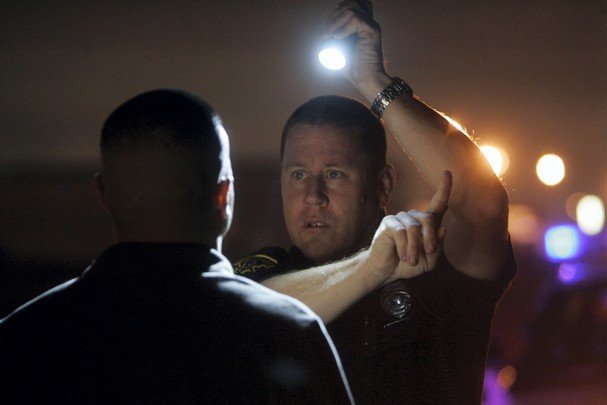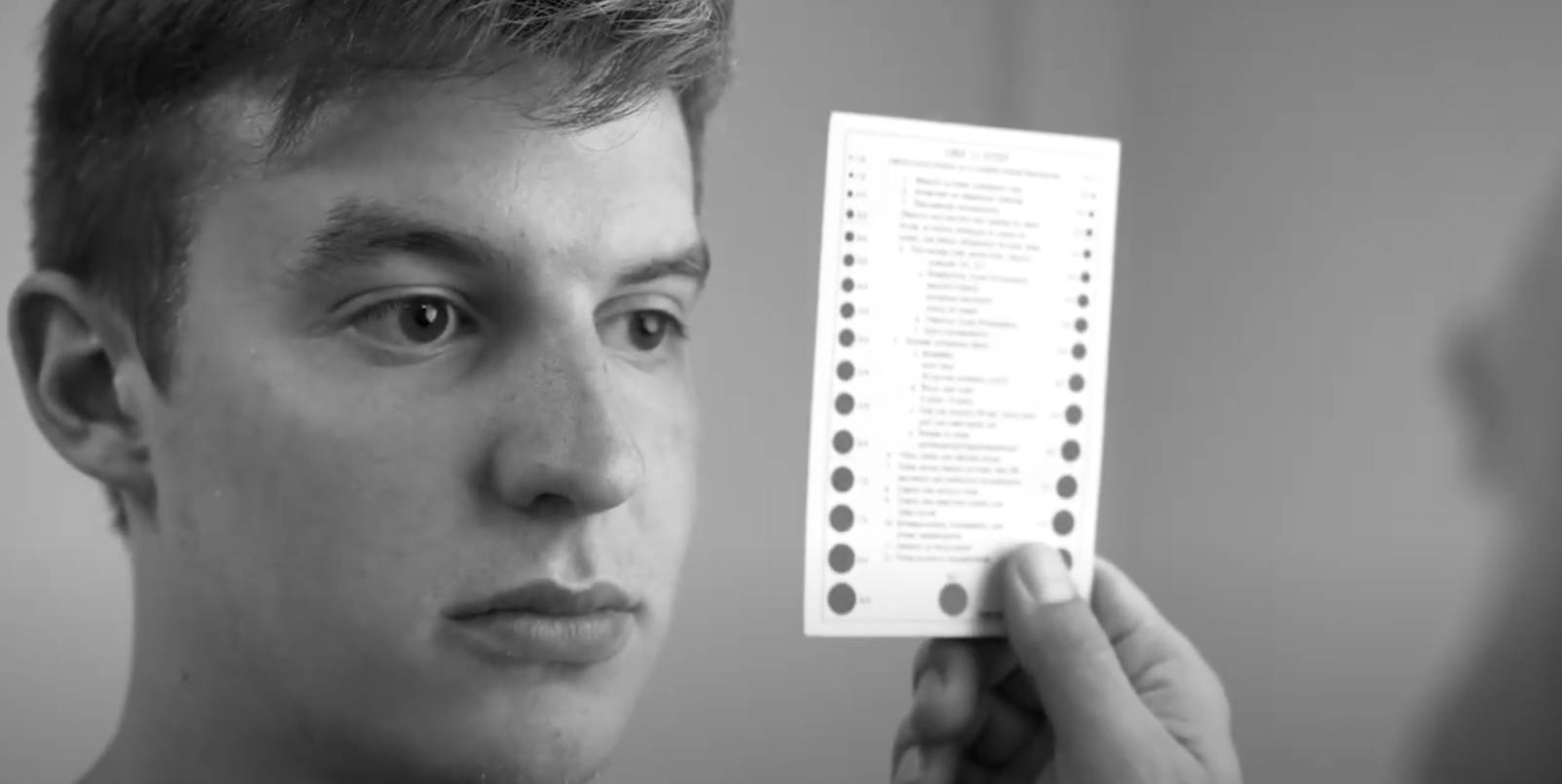What are Field Sobriety and DRE Tests and how are they Used?
When someone is suspected of driving while impaired, whether it be due to alcohol or drugs, the standardized field sobriety tests and the Drug Recognition Expert tests are the most accurate and commonly used methods of determining impairment. They were designed by the National Highway Traffic Safety Administration specifically for the purpose of eliciting the signs and symptoms of impairment. These tests have since been studied by several independent organizations and shown to be accurate ways to detect and determine impairment on both alcohol and drugs.
The tests include both physical and cognitive impairment tests, namely:
Horizontal Gaze Nystagmus (HGN)
Walk and Turn (WAT)
One Legged Stand (OLS)
Horizontal Gaze Nystagmus (HGN)
The Horizontal gaze nystagmus (HGN) test is one of the field sobriety tests used by officers to detect whether a driver is intoxicated. The term “Nystagmus” refers to the jerking of the eye, with this test particularly measuring this motion when the eye is moved horizontally to one side or the other.
To administer an HGN test, an officer takes an object, like a pen, and places it 12 to 15 inches in front of the subject’s nose. The officer will then observe the subject’s eyes as they follow the pen to see at what angle the eye starts jerking. The more intoxicated the subject is, the less the eyes will move to the side before involuntary jerking begins. The HGN test includes several distinct components. Those being lack of smooth pursuit, distinct and sustained nystagmus at maximum deviation, and onset of nystagmus prior to 45 degrees.
Lack of smooth pursuit looks for a test subject’s ability to smoothly track a stimulus moving across their vision. If they can’t smoothly track the stimulus, they may be impaired. Distinct and sustained nystagmus at maximum deviation is when the stimulus is moved to the left and right peripheries of the vision to determine if jerking of the eye occurs. Onset of nystagmus prior to 45 degrees is when the stimulus is moved left and right at a speed that takes approximately 4 seconds for the stimulus to reach 45 degrees from center. The officer is to watch the eye carefully for any signs of jerking.
Walk and Turn
The Walk-and-Turn (WAT) test is where the subject is told to take nine steps, heel-to-toe along a straight line. After, they must turn on one foot, and come back identically to how they started. The officer examining the test looks for impairment signs like the subject being unable to keep balance while listening to instructions, the subject starting before instructions are finished, the subject stopping while walking to regain balance, the subject failing to touch heel-to-toe, subject stepping off the line, subject using their arms to balance, subject making an improper turn, or the subject taking an incorrect number of steps.
One Legged Stand
The OLS test is when a subject is told to stand with one foot exactly 6 inches off the ground. Then they are to count aloud for 30 seconds. On this test, officers look for signs of impairment like swaying while balancing, hopping to maintain balance, using arms to balance, and putting the foot down.
Oftentimes, these tests are effective for determining alcohol impairment but don’t have the same rate of effectiveness for cannabis impairment. Officers can also use an oral fluid test or they can measure the driver’s blood THC concentration. This article we wrote explains how long you can test positive on a drug test for marijuana, however, THC isn’t an accurate measure of determining impairment.
The standardized field sobriety tests, originally designed to detect alcohol-related impairment, identify around 41% of cannabis impairment cases correctly when used alone. The Drug Evaluation and Classification (DEC) program and the DREs that perform these evaluations are capable of more accurate and thorough determinations of impairment. These tests are made up of divided attention and coordination tests, observations, eye examinations, an interview, and measurements of blood pressure and temperature. This suite of tests is around 85% accurate at determining impairment.
Gaize’s automated tests allow officers to see more eye movement data, and they can review the video of the test if they question it. Without extra eye movement data, it is a lot harder to determine the state of an individual. Unfortunately, because of the time commitment and money needed to train officers to become a DRE, oral fluid screening and blood testing for drugs are the preferred method of testing, which as we’ve stated previously, detects THC but does not determine impairment.
Click for a video of how the Standardized Field Sobriety Tests are administered.
Drug Recognition Experts use 12 Tests.
To these three basic tests that all officers learn, Drug Recognition Expert Officers also perform additional evaluations. This 12-step process to determining impairment requires extensive training and regular practice to perfect. They perform the following tests in addition to those listed above:
Vertical Gaze Nystagmus (VGN)
Lack of Convergence
Pupillary Rebound Dilation
Pulse Rate
Body Temperature
Muscle Tone
Modified Romberg Balance
Finger to Nose Test
Check for Injection Marks
These tests have been validated as accurate ways to determine impairment by numerous studies.
Click to watch a video on a Drug Recognition Expert Officer evaluation.
What can officers learn from these tests?
Using the above tests, Drug Recognition Expert Officers can accurately determine impairment and classify the impairment as resulting from one of the following classes of drugs:
Alcohol / Central Nervous System (CNS) Depressants
Central Nervous System (CNS) Stimulants
Cannabis
Psychedelics
Dissociative Anesthetics
Narcotic Analgesics
Inhalants
If a subject is determined to be impaired, they will be charged with Driving Under the Influence (DUI) for alcohol, or Driving Under the Influence of Drugs (DUI-D) for drugs.
How are DUI and DUI-D cases prosecuted?
When a suspect is charged with driving under the influence (DUI), they are usually encouraged by the District Attorney who is prosecuting the case to plead guilty. If the case is solid, typically a lawyer or public defender will also recommend to their client that they plead guilty. Doing so can save time, court costs, and often results in a lower sentence when compared to going to court.
If a subject doesn’t want to plead guilty, or their case seems to have holes in it, a court date is set and the accused will have an opportunity to tell their side of the story. These cases are prosecuted using all of the evidence that was gathered during the investigation that the officer does prior to making and arrest, and evidence gathered after making the arrest. This evidence often includes a breathalyzer reading, the report of the arresting officer on the incident and how the subject responded to the standardized field sobriety tests. Blood testing, and Drug Recognition Expert Officer evaluations are also becoming more common.
District Attorneys prosecute many DUIs, and have become very adept at making their case and leaving little left to question about the incident. However, talented defense attorneys are also very good at defending their clients against DUI charges.
How are DUI and DUI-D cases defended?
DUI charges are so common that there are often attorneys who specialize in practicing in this area. They’ve often seen thousands of DUI cases, and know just how to draw their client’s guilt into question. This is commonly done by attacking the processes and equipment used to charge the defendant.
First, defense attorneys will seek to challenge the validity of the traffic stop that initiated the charge of DUI. That might include questioning whether the officer saw what they claim they did - usually a traffic infraction that led them to believe that the driver could be impaired. That might include weaving, failure to stop at a stop sign, erratic or aggressive driving behavior, or failure to signal when turning. Dash cams installed in police vehicles have caused a dramatic reduction in the effectiveness of this defense tactic. Now, officers can simply refer to the video recording of the incident.
Another common tactic is to attempt to undermine the officer’s credibility in the performance and interpretation of the Standardized Field Sobriety Tests. This is usually accomplished by suggesting that the officer didn’t have enough training to perform the tests, or interpret the test results. That calls into question the amount of training the officer has received, how recent the training was, and how long they have been a police officer. The officer, meanwhile, traditionally has nothing but their written report to prove their side of the story. Gaize is providing the first video evidence of eye movement in response to perfectly performed standardized field sobriety eye tests.
The final common tactic that defense attorneys use is to call the accuracy of the chemical tests into question. For alcohol, that usually means checking the calibration dates and maintenance records for the breathalyzer equipment. For drugs, saliva tests are also notoriously inaccurate and commonly attacked. Blood tests are the most expensive for departments to conduct, but the least likely to be attacked in court.
Are these tests really accurate?
Yes, the standardized field sobriety tests and the DRE evaluation process have both been validated by scientific studies and courts of law as valid and accurate ways to determine impairment. Notably, they are the only tests to have shown accuracy in determining active impairment resulting from cannabis use.
The studies linked below are the most commonly cited when considering the accuracy of the the Standardized Field Sobriety Tests. They’re of varying scientific rigor, but similar in outcome. When considered as a whole, they certainly indicate the Standardized Field Sobriety Tests are accurate and sensitive to impairment.
-
This is the seminal study for the SFSTs and resulted in their broad adoption in the US and beyond.
-
http://sfst.us/NHTSA/1981.pdf
This study validated the results of the previous study with significantly more data and rigor.
-
http://www.drugdetection.net/NHTSA%20docs/Anderson%20Field%20Evaluation%20of%20Battery%20for%20DWI.pdf
This was another study that evaluated the use of the SFSTs in the field and showed high accuracy.
-
https://dui.tndagc.org/resources/SFST%20Validation%20Studies/Florida.pdf
This test was conducted with the intent of evaluating the accuracy of the SFSTs in the state of Florida.
-
https://www.ojp.gov/pdffiles1/Photocopy/197439NCJRS.pdf
This study again validated the accuracy and sensitivity of the SFSTs.
-
https://rosap.ntl.bts.gov/view/dot/1821
This study evaluated the effectiveness of the Horizontal Gaze Nystagmus Test only. It showed sensitivity, but that human error is common.



